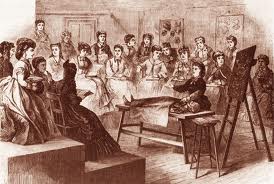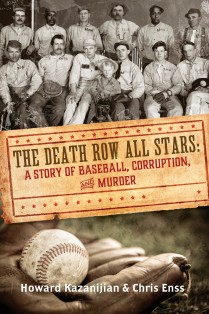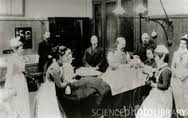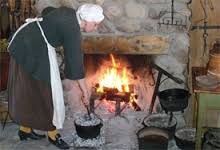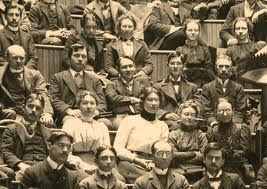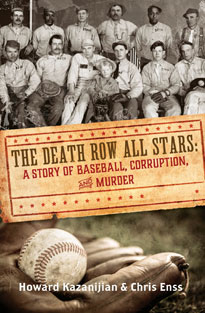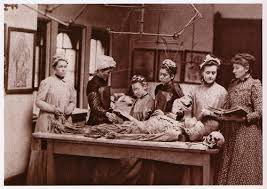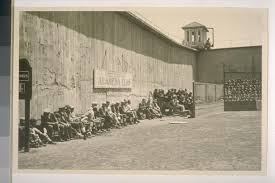Chapter Two: The Captain and the Critic
Sheep rancher Joe Emge woke up fast from a fitful slumber late on a chilly night in early April 1909 near Spring Creek, Wyoming. There was no light inside the wagon where he and one of his ranch hands had bedded down. When the darkness around him began to break up and his eyes slowly adjusted, he saw the dim, blurred outline of a man standing over him. Joe squinted and strained to focus on the object the imposing figure was pointing at him. When he realized the object was a six-shooter, it was too late.1
Cattleman George Saban pulled the trigger back on his .35 automatic and fired a shot into Joe’s face. He quickly pulled the trigger back again and slapped the hammer with his left hand; it was the fastest way to get off several more shots. The objective was to not only kill Joe but also the other man in the wagon. It was a job the gunman dispatched with ease and no regret.2
George jumped out the vehicle and stood in a pool of firelight cast by a smoldering campfire. He heard gunfire erupting inside a second wagon close by, and he turned to see what had happened.3
Joe Allemand, a sheep rancher with a bullet hole in his back, stumbled out the wagon, picked himself up, and staggered away from the scene, his hands in the air. Two gunmen, Herb Brink and Ed Eaton, stepped out of the wagon behind him. Herb leveled his Winchester at Joe and fired. Joe lurched forward and fell hard in the dirt, dead. “It’s a hell of a time at night to come out with your hands up,” Herb quipped.4
Herb marched over to a stand of sagebrush, gathered a handful, and placed the end into the campfire. The brush crackled and snapped as it burned. He held it up in the air and watched the flame grow then tossed it under the wagon nearest him. In a matter of moments the vehicle was engulfed in fire. George followed Herb’s lead, grabbed a fistful of dry vegetation and dipped it into the flames licking the wheels of the wagon.5
As the three men watched the fire burn and consume the vehicles and the gear around it, the report of a series of gunshots in the near distance was heard. Four of George and Herb’s cohorts had unloaded their weapons into a large herd of sheep. The few animals that managed to escape scattered, bleating loudly as they ran away.6
George walked over to his horse which was tied to an old, rain-bleached post and lifted himself into the saddle as though he hadn’t a care in the world. He nudged his ride away from the chaos and trotted off into the shadows of the landscape, leaving the others to follow after him.7
On April 3, 1909, Felix Alston, then the Big Horn County Sheriff, arrived at the scene with a few deputies in tow. He found Joe Allemand’s body lying near the smoldering embers of his wagon and one of his sheep dog’s puppies was curled up on his chest. The burned bodies of Joe Emge and his ranch hand were among the charred vehicles as well.8
The brutal murders were the product of an ongoing feud between Wyoming cattlemen and sheep ranchers over the use of rangeland grass. Cattle owners claimed the land was for their specific use, and anyone who challenged them were dealt with harshly.9 “We know who some of the participants were, but had no bona fide evidence,” Sheriff Alston wrote in his memoirs. “There are many depredations committed against the sheepmen. Thousands of sheep killed and left to rot on the plains, a number of sheepherders murdered”10
Seven men, including George Saban, were eventually arrested for the crime. All the felons were prominent stockmen of Big Horn County and were placed on trial in mid-October 1909.11 According to the October 19, 1909, edition of the Montana newspaper, the Anaconda Standard, the arrests of the men came as the result of “an investigation started by the Wyoming Wool Growers Association.”12 Members of the Wool Growers Association had little trust in the efforts of county officials. Many of those officials were cattlemen, and the association doubted that the region’s law enforcement agents could perform their duties in an unbiased manner.13 That doubt extended to Sheriff Alston who came to Wyoming in 1892 in search of a “new and more fruitful range for his cattle.”14 The Wyoming Wool Growers Association initially hired Pinkerton Detective Joe LeFlores to investigate the Spring Creek Raid, but ultimately it was Sheriff Alston who apprehended the killers.15
While the murderers were awaiting trial, an attempt “to cause the escape of some of the men after they had been released on bail was frustrated by rearrests,” the article in the Anaconda Standard read. The accused were convinced that the cases against them would be dropped because sheep raiders were generally not prosecuted, but a grand jury did find them guilty of murder.16
George Saban was sentenced to more than twenty years in prison and was ordered to serve his time at the state penitentiary in Rawlins.17 Fifteen months after George began serving his sentence Felix Alston hired on as the warden of the facility.18 In May 1911, when Warden Alston formed the penitentiary baseball club, he made George Saban the team captain.19 It’s likely that Warden Alston’s decision was motivated by loyalty. According to the warden’s grandson, Scott Alston, George Saban was Warden Alston’s closest friend. Their ranches were next to each other, and George was an invited guest to Warden Alston’s wedding in 1900.20 Historians such as Duane Shillinger, speculate that the State Board of Charities and Reform, and subsequently Warden Alston, were persuaded to give George special treatment such as participating in a work release program and a key role on the baseball team because prominent cattlemen and politicians viewed his crimes as necessary to cattle ranchers.21
The influence cattlemen had on the State Board of Charities and Reform and Warden Alston was not missed by Otto Gramm. Otto, who was irritated by Governor Joseph Carey’s decision to terminate his role with the lessee program, paid close attention to the situation at the prison in hopes of acquiring information of wrong doing. His plan was to use the knowledge as leverage to reinstate the program and get himself reappointed head of the profitable venture.22
Ohio born Otto Gramm became the lessee at the penitentiary in 1903.23 From the spring of 1903 until the summer of 1911, it is estimated he accumulated close to a quarter of a million dollars in revenue from the broom manufacturing operation at the prison. The finished products were not only shipped by train to hamlets within Wyoming, but also to Nebraska, California, Utah, Montana, Minnesota, South Dakota, Colorado, and Idaho. The price of brooms varied from $.52 to $2.15 each.24 According to historian T. A. Larson, Governor Carey vehemently condemned the state contract which enabled Gramm to add to his bank account with what amounted to free labor.25
Inmates were subjected to stiff penalties if quotas set by Gramm were not met. He rewarded with cash certain guards who helped keep the system going and made sure certain prisoners who helped keep the number of brooms produced high were provided with extra food or clothing.26 Many inmates resented Gramm, however. According to a report compiled by Wyoming State Attorney Robert Murray in 1977 entitled “Wyoming State Penitentiary in Rawlins,” the condemned “looked with distaste on the whole range of implications of the [lessee] contract.”27
By June 1911 Gramm was beginning the process of transferring the duties of running the Laramie Broom Company to L. W. Senville.28 Rumors of reform permeated the cells and mess hall at the penitentiary. Inmates discussed the need for better food, uniforms, and both recreational and educational programs.29 Whom George Saban and Warden Alston selected to play baseball, when the team would be ready for a game, and if the public would accept them were other topics of conversation. Articles in the penitentiary newsletter addressed inmates’ concerns about how law abiding citizens would react to convicts participating in activities that would take them off prison grounds for a time.30
“All to gain and nothing to lose is the great problem confronting boys that come in sentenced to the book,” an article in the summer 1911 edition of the Wyoming State Penitentiary convict newsletter began. “A crime is committed, possibly on the impulse of a moment, while under the influence of ‘dope’ or strong drink, or in a moment of temporary insanity; the trial, conviction, and, alas, the sentence – life. But society and mankind are becoming more lenient, and as time, the great healer of wounds passes, society is becoming inclined to extend forgiveness, consequently the ‘lifer’ who has been sentenced here, who has realized his great error, and has gone to work like a man, usually gets ‘another chance’ at a proper time, with the proper opportunity to redeem himself.”31
Members of Alston’s All Stars received “another chance” in the summer of 1911 when practice began.32 The All Stars’ game of redemption got its start out west when Alexander Joy Cartwright, a bank clerk turned prospector, taught fellow Forty-Niners the game.33 He organized a baseball club in San Francisco, and on February 22, 1860, the first game between Cartwright’s Club and a rival team in the area was played. Cartwright helped develop the game into the highly competitive sport in which the All Stars participated. He established the distance between bases at ninety feet, nine person teams for nine innings, and three outs per team per inning. In addition to adding the position of shortstop, he eliminated the rule that allowed the defense to get its runner out by throwing the ball at him. He also divided the field into fair and foul territory.34
By the time the prison baseball team took to the field in July 1911, more than sixty thousand clubs had been organized all over the United States, comprised of approximately seven hundred, fifty thousand men and boys over twelve years of age with practically everyone else as spectators.35 According to the December 12, 1906, edition of the Atlantic Evening News, “…baseball is the most logical form of athletic pastime evolved by man and the logical way to reform the despondent, down-trodden or devious. The game is the only one played which is founded upon exact and scientific lines. The playing field is laid out with such geometrical exactness, and with such close study of natural speed of foot and power of arm of the human animal as to give the defensive team an exactly equal chance with the attackers, and to compel both attacker and defender to approach the extreme limit of human speed and agility in every close play.”36
The prison players would make the most of the opportunity the game offered, and Warden Alston was hopeful the ball club would be as well received, if not more so, as the hometown favorite. The Rawlins Team played a total of twenty-five games during an average season and was one of the top teams in the state. Financially, most seasons were not successful. In spite of their popularity, the Rawlins Team lost money from 1909 to 1911.37 Manager Fred Rendle assured reporters at the Rawlins Republican that the loss was “no fault of his own.” In a separate interview with the paper, Rendle sighted the preoccupation with the war brewing in Europe and lack of a solitary star player for the minor dip in ticket sales. “Perhaps such a sensation [a solitary star] would attract a larger audience,” he told reporters.38 The September 21, 1911, edition of the Rawlins Republican article concluded with an idea for improvement. The reporter suggested that ball club officials begin putting together their teams earlier in the baseball season.39
Patrons of gambling parlors along the South Front-East Fifth Street Railroad Crossing in Rawlins looked forward to the day when the team was organized as well. The earlier the odds makers could evaluate the players, the better idea they had about how much to wager on the team. Customers who frequented establishments such as Wolf’s, the Senates, the Elkhorn, and the Alhambra followed the baseball clubs that came up against the Rawlins team, scrutinized their weaknesses and strengths and bet appropriately.40
According to the December 15, 1911, edition of the Carbon County Journal, “the mark of a quality team can first be determined by watching the pitcher and catcher.” The article emphasized that the signs used between the two players were extremely important. “There are not as many signs used on a ball club as the public would believe,” the author of the article elaborated. “The catcher must sign the pitcher for every ball he throws. That is to prevent confusion or to keep from crossing each other. The catcher has a sign for a curve ball, a fast ball and a slow one. To ball players all curve balls, such as the drop and the outcurve, are called a curve. Ball players do not recognize the ‘in’ curve. That is called a fast ball. Any ball thrown by a right handed pitcher with sufficient speed will jump inward to a slight degree. The outcurve and crop are unnatural curves and the ball must be spun in an unnatural manner to get that peculiar break.”41
Few spectators would have bet against Joseph Seng when he was catching and the All Stars’ pitcher Thomas Cameron.42 Cameron, a twenty-year-old coal miner and native of Tennessee, had a terrific fast ball and was a good hitter.43 Seng, the standout performer on the team, signaled the talented pitcher on what throw to use. Under Seng’s direction, Cameron struck out the majority of batters that faced him.44
If not for George Saban’s physical challenges, he might have been an exceptional player and not just the team captain. Two of his fingers on his left hand had been amputated at the second joint and two fingers on his right hand had been amputated at the third joint.45
The respect George had among many of the cattlemen in the community was shared by the inmates at the penitentiary. He was considered by his partners in crime as an old cowman, well-suited for the job of attacking sheepherders who dared bring their animals into the cattle region.46 Some prison guards and prison officials felt the same way about him. George was one of the prisoners assigned to road improvement work. Guards daily led the inmate work crew to sections of roads in Rawlins that needed to be repaired and escorted them back to their cells in the evenings. Because several guards, whose families were in the cattle business, believed his actions against the sheepherders were justified and the sentence posed too harsh, George was allowed to leave the detail dressed in civilian clothing and frequent popular gambling dens when he pleased.47
George had been in prison more than a year when Warden Alston enlisted his leadership skills for the baseball team. He was awaiting an answer from a judge about overturning his conviction.48 George wanted the courts to set aside the conviction on the grounds that his plea of guilty was obtained under duress. A judge ruled against him before the first game was played.49
Alston’s All Stars practiced on a regulation size field in the exercise yard surrounded by a massive stone wall. Armed guards watched the team run the bases from a glass-enclosed tower. During regular visits to the prison to oversee the broom making process, Otto Gramm watched the team, too.50 He was unaccustomed to not having a key role in any of the ventures within the prison. According to biographical information about Gramm, “he was usually at the head of anything that touched the community.” Historical records note that Gramm was a self-made man. His experience as a successful businessman and as a lessee and manager of the Union Pacific Railroad’s rolling mills (a plant where steel rails are made) had given him the experience necessary to operate the lessee program at the penitentiary.51
In addition to the aforementioned ventures, Gramm was a member of the public school board, on the Board of Trustees for the University of Wyoming, a probate judge, and Albany County treasurer.52 Given all Gramm had done to try and gain respect in Wyoming, it is an understatement to say he was displeased with an article in the April 21, 1911, edition of the Wyoming State Journal that challenged his integrity. “The State Board of Charities and Reform will take over management of the state penitentiary lessee program and remove one great source of political dissatisfaction. The Board made an excellent start in the management of the institution by appointing Felix Alston as warden as he has proven a capable and conscientious officer while handling criminals during his service as a sheriff of Big Horn County.”53
It was evident to Gramm from the suggestion made to the State Board of Charities and Reform by governor Carey to remove him from the lessee program that the governor did not hold him in high regard. Not long after terminating his contract with the penitentiary, Governor Carey demanded Gramm’s resignation as the president of the Board of Trustees for the University of Wyoming.54 According to the April 21, 1911, edition of the Nevada State Journal, Gramm initially refused the directive and defied the governor to prefer charges to remove him. “Gramm was an issue in the last political campaign being the Albany County member of the Republican state convention and vice-chairman of the convention,” the article explained. “He has been a member of the board of trustees of the university for sixteen years, being first appointed in 1895.”55
Felix Alston was favored by Governor Carey. The Governor, along with several state newspapers, referred to Alston as “the most remarkable criminal catcher of Wyoming.”56 An article in the October 16, 1908, edition of the Big Horn County Rustler elaborated on his career in law enforcement after he captured a notorious horse thief named R. L. Stratton. “Sheriff Felix Alston has a reputation among peace officers and criminals of never quitting a trail. No man he ever undertook to run down has escaped,” the article noted. “His detective operations led him into every state of the Rocky Mountains and to many outside that area. He seems to possess a psychic instinct for locating criminals.”57
The editorial staff at the Big Horn Rustler newspaper was not alone in their assessment of Alston. The April 19, 1911, edition of the Cheyenne State Leader not only echoed praise for the lawman, but also applauded Governor Carey’s decision to oust Otto Gramm. “Speaking of contrast,” the article began, “think of the difference in caliber of Otto Gramm, retiring manager of the state penitentiary, and Felix Alston, the incoming manager.”58
Regardless of the various opinions or the fact that his time as head of the prison lessee program was coming to an end, Gramm believed he had some lingering influence at the facility. He did own all the equipment and material used to manufacture the brooms, and, as long as that was the case, he would continue to be a part of the business, meaning he would visit the penitentiary to make sure his property was being maintained properly.59 He would also be able to monitor other activities at the prison such as Warden Alston conferring with murderer George Saban on the baseball field. Gramm would have a first-hand look at the players who enjoyed fame of sort – their names at one time or another resting on the tongues of men who had seen them operate; their faces known having been posted in newspapers and on sheriffs’ boards along with the list of crimes they had committed.

